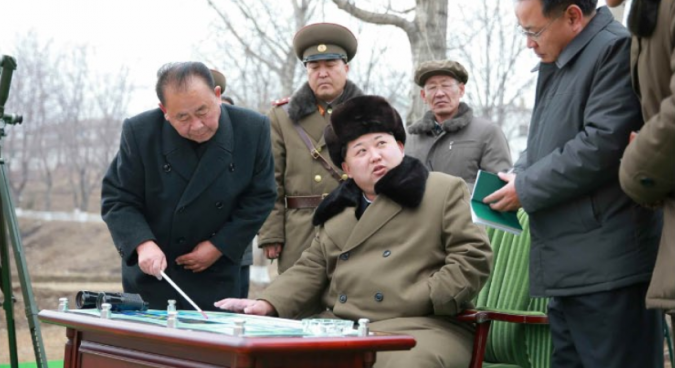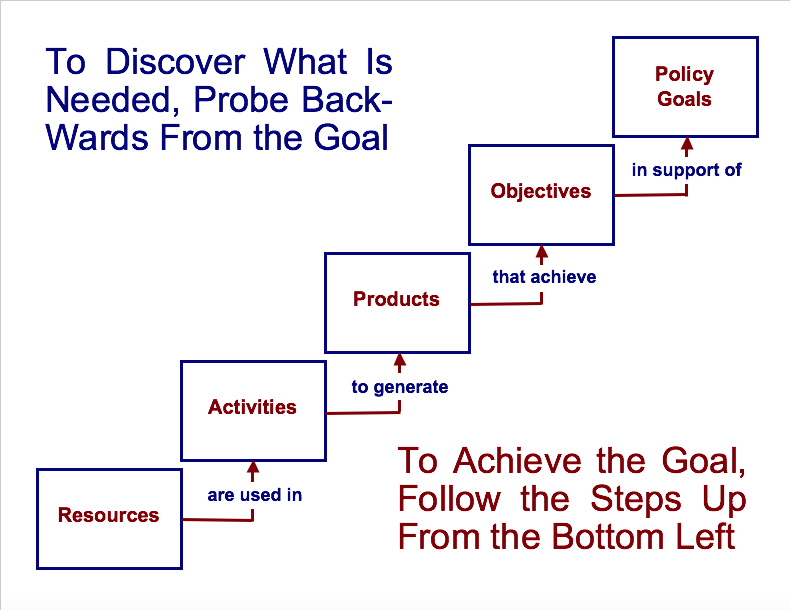
What are the West’s long-term goals for N.Korea?
If we don’t know what we want – or set realistic goals – we will never get it
In looking over recent events in North Korea and the responses they have engendered, it seems clear that the West’s policy for dealing with Kim Jong Un is foundering. It is doubtful that policymakers have devised a viable long-term plan of action – and that is probably because they do not have realistic long-term goals. Therein lies a problem, for without knowing where one wants to go, the correct direction remains unknown. Further, if the direction is unknown, any action is meaningless.
So, what are possible goals with regard to North Korea? Remember that goals are end-states; other non end-state accomplishments, no matter how important, are merely objectives in support of some goal. For example, many diplomats, military leaders, and politicians claim the goal with regard to the Korean Peninsula is for the North to forfeit its nuclear weapons and missile programs, but that is not the goal. The goal is a peaceful and stable region, which by the way includes China, Japan, Russia and South Korea – not just North Korea.
Before reaching the goal of a stable and peaceful region, one needs to consider what it is that one is dealing with before getting to the goal. In Korea, there are a number of contingencies, some of which are more likely than others, that will be listed below in order of likelihood along with a brief description.
NORTH KOREAN COLLAPSE OR DEFEAT IN WAR
Kim Jong Un is well-aware of the military forces that he faces, and he recognizes that attacking South Korea would mean the end of his regime
The U.S. and its allies need to be prepared for either a North Korean collapse or a war with the regime, after which the North is absorbed partially or completely by the South. However, the R.O.K. or the U.S. launching a pre-emptive attack on the North seems to be outside the realm of current political acceptability. Further, Kim Jong Un is well-aware of the military forces that he faces, and he recognizes that attacking South Korea would mean the end of his regime. Moreover, for those who benefit from the Pyongyang regime, it is in their interests – and within their power – to keep it alive, avoiding a collapse. Therefore, the probability of either collapse or war is greater than zero – but not by much.
NORTH KOREA MORPHS INTO A MORE TOLERABLE REGIME
Market reforms and sanctions have been touted as the way to influence North Korea, and that is certainly the case, but to a limited degree in the short to intermediate terms. In the meantime, the regime continues to be concerned about its own survival, and it believes that key to that is maintaining tyrannical control over its people. The prospect of the North becoming a more democratic country is of low probability.
THE STATUS QUO CONTINUES
If history teaches us anything, it is that North Korea always manages to survive whatever the U.S. and its allies throw at it. Further, the North usually finds a way to prod and poke at the West without suffering consequences severe enough to get it to change. Even with the recently imposed sanctions, North Korea will merely tighten its belt and somehow make do. The probability of the status quo continuing is of moderate to high probability.
THE STATUS QUO INTENSIFIES
When the North Korean domestic situation becomes strained or the regime is discomfited, the usual reaction is to create a diversion by staging some provocation of South Korea or the U.S. Given the level of concern about the potentially destabilizing influence of market activities coupled with the recently added sanctions that will pinch the regime further, Kim Jong Un will feel pressured to do something to divert the focus away from his failure to provide food and health care for citizens. This is exacerbated by the joint R.O.K.-U.S. military drills this year that openly include a tabletop exercise about occupying North Korea. That has to make the North feel even more insecure, but any provocation by Pyongyang must not generate a devastating response by Seoul or Washington. The North has been very successful in this in the past, and at least for the short term, increased or more dangerous provocations are a high probability.
HOW DOES THE WEST RESPOND?
Concentrating solely upon getting Pyongyang to divest itself of its nuclear weapons and to stop its ICBM program is wishful thinking
This brings into sharper focus some important questions. What is it that the West wants – and is it realistic? Concentrating solely upon getting Pyongyang to divest itself of its nuclear weapons and to stop its ICBM program is wishful thinking. How will South Korea and the U.S. deal with what is most likely? What steps are being taken to support any long-term goal, given that the North Korean political environment offers a number of possibilities with different probabilities?
If the U.S. and its allies do not have a clear vision of how to reach what should be its long-term goal, then nothing else matters – except that time, effort, money, and possibly lives will have been wasted. Once a realistic long-term goal is acknowledged, the objectives (usually more than one are necessary) needed to support that goal can be determined. But those objectives themselves must be underpinned by products that can achieve them. And of course those products cannot be generated without focused activities, which in turn rely upon having the proper resources.
To follow this line of development in a quaint but still meaningful way, consider the classic children’s story about how a monarch lost his kingdom, all for want of a horseshoe nail. The graphic below illustrates this process. Not adhering to these steps guarantees failure.
Here are two examples on how this works:
- Resources (competent people) are used in activities (diplomatic negotiations or talks) to generate products (meaningful international agreements and treaties) that achieve objectives (reducing hostilities) in support of policy goals (regional peace and stability).
- Resources (combat-ready troops) are used in activities (execution of military operations plans) to generate products (battlefield victories) that achieve objectives (regime change) in support of policy goals (regional peace and stability).
At this point it must be emphasized that there is a huge difference between (a) merely possessing military capabilities, and (b) having the political will to use those capabilities. Ops Plans – and diplomatic initiatives, too – that collect dust on shelves while the situation in Northeast Asia continues to fester do no good. Equally important, however, is the fact that neither does the willy-nilly use of force nor the participation in senseless jibber-jabber.
There have been a number of recent reports regarding attempts to start discussions between the U.S. and North Korea. None seem to have been successful. Admittedly, some of this must necessarily occur out of the public eye – but there is precious little indication that anything constructive is being accomplished. In the absence of encouraging evidence, the question therefore remains: what do we want – and how do we get it?
Main image: Rodong Sinmun
